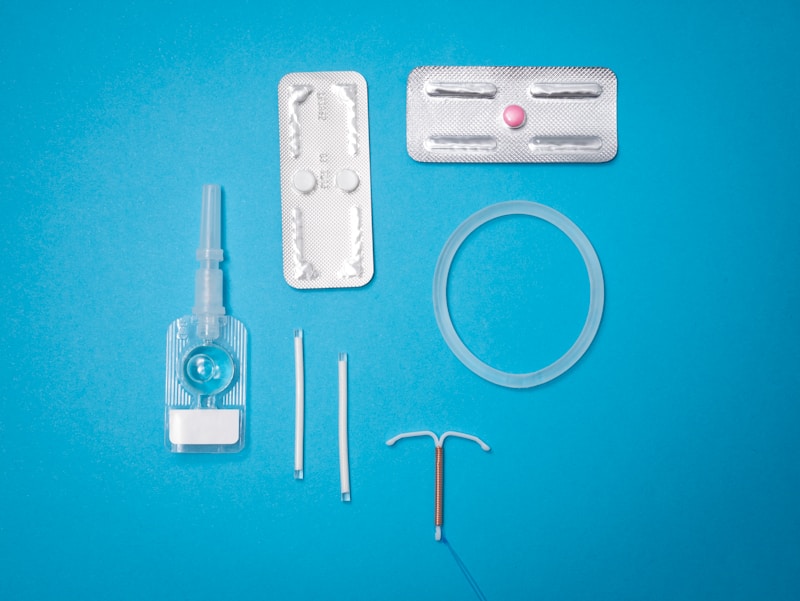25 Questions
Which of the following is NOT a function of the female reproductive system?
Produces spermatozoa
What is the average length of the fallopian tubes?
3-4 inches
At what age does puberty typically occur in girls?
11-14 years
What initiates the release of FSH and LH during puberty?
Pituitary gland
What hormone causes the development of female secondary sexual characteristics?
Estrogen
What is the term for the stage at which an individual first becomes capable of sexual reproduction?
Menarche
What is the function of the vagina?
Serves as birth canal
What is the term for the period during which external and internal genital organs return to an unaroused state?
Resolution
During which phase of the menstrual cycle does ovulation occur?
Follicular phase
Which hormone is responsible for inhibiting the release of luteinizing hormone (LH) from the pituitary gland?
Progesterone
What is the average duration of menstrual flow?
4-6 days
What is the main hormone responsible for the maturation of an ovum with a graafian follicle?
Follicle-stimulating hormone (FSH)
What is the average length of the menstrual cycle?
28 days
What are the four hormones that control the menstrual cycle?
Estrogen, progesterone, luteinizing hormone (LH), follicle-stimulating hormone (FSH)
What are the signs of ovulation?
Increase in body temperature, changes in cervical mucus, cervix softens
What is the main function of the corpus luteum?
Secrete progesterone
Which of the following symptoms is more common in nulliparous women and women who are not having intercourse?
Feeling bloated
What can excessive bleeding during a menstrual period cause?
Anemia
What can cause menorrhagia?
Hormonal disturbances
What is mid-cycle spotting often caused by?
Vaginal irritation from infection
What is the time of life following the final menses called?
Postmenopausal
What is recommended for women to be familiar with their genitals and any possible abnormalities?
Genital self-exams
When is it recommended to go to a doctor?
If infection occurs
What is the purpose of routine gynecological examinations?
To detect any abnormalities
What can cause a woman to become anemic from chronic blood loss?
Excessive bleeding
Study Notes
Female Reproductive System
- The female reproductive system does not have the function of producing sperm.
- The average length of the fallopian tubes is approximately 10-12 cm.
- Puberty typically occurs in girls around 10-14 years old.
Hormones and Puberty
- The release of FSH and LH during puberty is initiated by the hypothalamus.
- The hormone responsible for the development of female secondary sexual characteristics is estrogen.
- The term for the stage at which an individual first becomes capable of sexual reproduction is puberty.
Vagina and Menstrual Cycle
- The function of the vagina is to provide a passageway for menstrual blood, serve as a birth canal, and allow for sexual intercourse.
- The term for the period during which external and internal genital organs return to an unaroused state is resolution.
- Ovulation occurs during the ovulatory phase of the menstrual cycle.
- The hormone responsible for inhibiting the release of luteinizing hormone (LH) from the pituitary gland is progesterone.
Menstrual Cycle and Hormones
- The average duration of menstrual flow is 3-7 days.
- The main hormone responsible for the maturation of an ovum with a graafian follicle is follicle-stimulating hormone (FSH).
- The average length of the menstrual cycle is approximately 28 days.
- The four hormones that control the menstrual cycle are estrogen, progesterone, FSH, and LH.
- The signs of ovulation include increased cervical mucus, basal body temperature increase, and mittelschmerz.
Corpus Luteum and Menstrual Irregularities
- The main function of the corpus luteum is to produce progesterone.
- Dysmenorrhea is more common in nulliparous women and women who are not having intercourse.
- Excessive bleeding during a menstrual period can cause anemia.
- Causes of menorrhagia include uterine fibroids, polyps, and adenomyosis.
- Mid-cycle spotting is often caused by the implantation of a fertilized egg.
Menopause and Gynecological Care
- The time of life following the final menses is called menopause.
- Women should be familiar with their genitals and any possible abnormalities through regular self-examination.
- It is recommended to go to a doctor if symptoms such as unusual bleeding, pelvic pain, or vaginal discharge occur.
- The purpose of routine gynecological examinations is to detect and prevent cervical cancer and other reproductive system disorders.
- Chronic blood loss can cause a woman to become anemic.
Test your knowledge on the female reproductive system and its various aspects, including disorders, hormonal control, menstrual cycle, and sexual response cycle. Explore both the internal and external genital organs and gain a comprehensive understanding of this intricate system.
Make Your Own Quizzes and Flashcards
Convert your notes into interactive study material.
Get started for free


